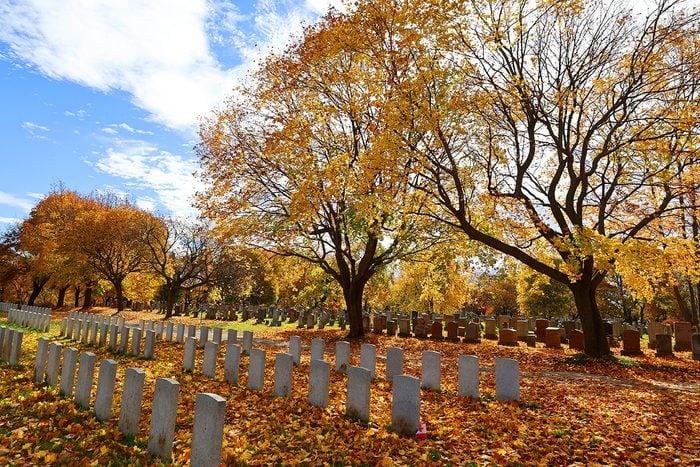
Notre-Dame-des-Neiges Cemetery
Montreal, Quebec
Thinking of visiting Canada’s biggest cemetery? You might want to bring a map. With more than 55 kilometres of lanes, one million people interred and 65,000 monuments, Notre-Dame-des-Neiges is so big it actually has its own online mapping service. While a graveyard might seem like a pretty spooky place to get lost, it’s certainly worth the trouble. Every mausoleum at the primarily Roman Catholic cemetery contains multiple crypts and one of them—La Pieta Mausoleum—even features a life-sized marble reproduction of Michaelangelo’s Pieta sculpture. The Montreal attraction also serves as the final resting place of Montreal Canadiens’ great Maurice Richard and former Quebec premier Robert Bourassa.
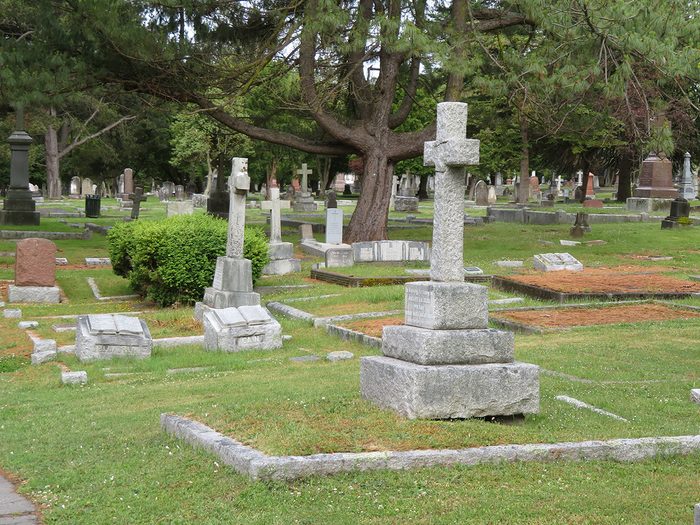
Ross Bay Cemetery
Victoria, British Columbia
With sweeping roadways that wind between some 27,000 graves, sandstone and granite monuments and unusual trees, Ross Bay Cemetery is like an art gallery, park and history lesson all rolled into one. The oceanside Victorian-style cemetery includes elaborate mausoleums and tall pillars from the early elite. The graveyard is the resting place of the first governor of British Columbia, Sir James Douglas, painter Emily Carr, coal baron Robert Dunsmuir and politician John Dean, who had his own tombstone erected years before he died.
Here are more hidden gems of B.C. worth exploring.
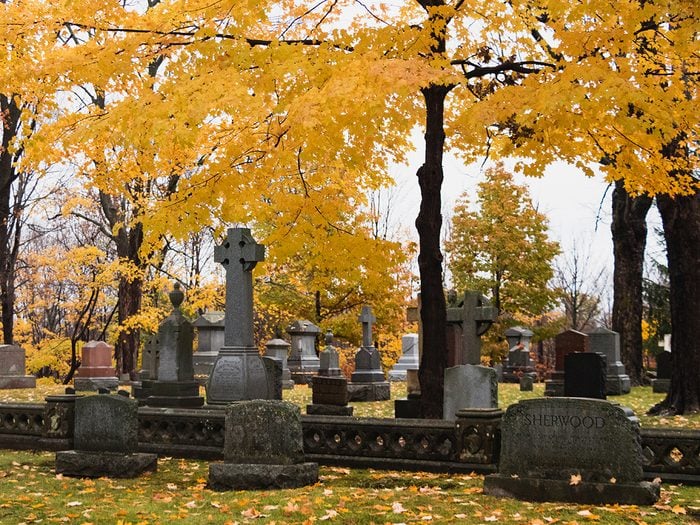
Beechwood Cemetery
Ottawa, Ontario
With nearly 65 hectares of landscaped gardens, magnificent trees and soothing ponds, it’s no surprise Canada’s most historically significant graveyard is often recognized as one of the most beautiful, too. The tranquil grounds of Beechwood Cemetery are home to more than 300 species of hostas and, in the spring, more than 30,000 tulips. And the historic buildings? Those are pretty impressive, as well. Beechwood Cemetery’s mausoleum is considered a great example of neo-gothic architecture and features stained glass windows by renowned artist James Bloomfield. The graveyard is the resting place for more than 75,000 Canadians including soldiers killed in the line of duty, war vets and politicians like Prime Minister Sir Robert Borden and the man known as the “Greatest Canadian,” Tommy Douglas, who founded the country’s universal health-care system.
Check out 10 great day trips from Ottawa.
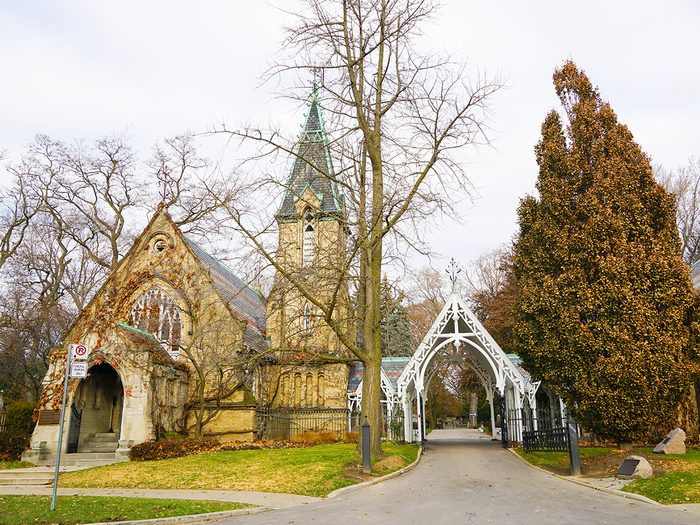
Necropolis Cemetery
Toronto, Ontario
Situated on a leafy street in Toronto’s upper east side and sandwiched in between two parks, Necropolis Cemetery really couldn’t be any more picturesque. Established in 1850, the cemetery’s buildings are examples of Victorian-style architecture. In the chapels are beautiful stained glass windows. The open grounds make it easy to wander along twisting paths, over hills and past crumbling tombstones. Derived from the Greek “city of the dead,” the Necropolis really does feel like it’s own city. The graveyard is the final resting place of many of Toronto’s most important people: the city’s first mayor William Lyon Mackenzie, rebellious journalist George Brown and, more recently, federal NDP leader Jack Layton.
Too wet for a walk? Check out the best fall movies to capture the spirit of this season.
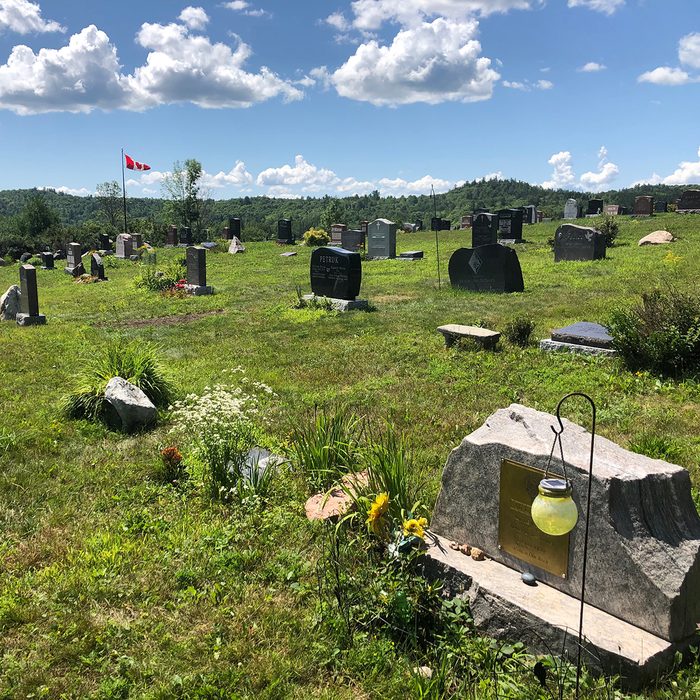
MacLaren Cemetery
Wakefield, Quebec
Nestled in a clearing in the hills bordering the Gatineau River, what the little MacLaren Cemetery lacks in size, it makes up for with sheer natural beauty. This small village cemetery is the final resting place for many Scottish settlers who helped found Wakefield. Former Prime Minister Lester B. Pearson is also buried here.
Discover the 10 places in Canada every Canadian should visit.
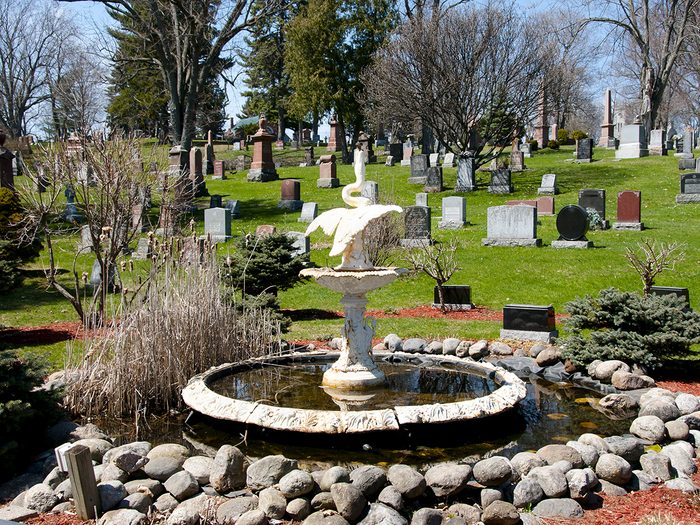
Cataraqui Cemetery
Kingston, Ontario
Canadian history buffs, take note: Kingston’s Cataraqui Cemetery is the final resting place for the country’s first Prime Minister, John A. Macdonald. The picturesque non-demoninational, not-for-profit graveyard is laid out like a park, allowing funerary monuments, vaults and tombs to seamlessly blend with natural features like mature trees, ravines and shrubs. The design is similar to rural cemeteries pioneered in France and the United States in the early 1800s.
These hidden gems of Ontario are yours to discover.
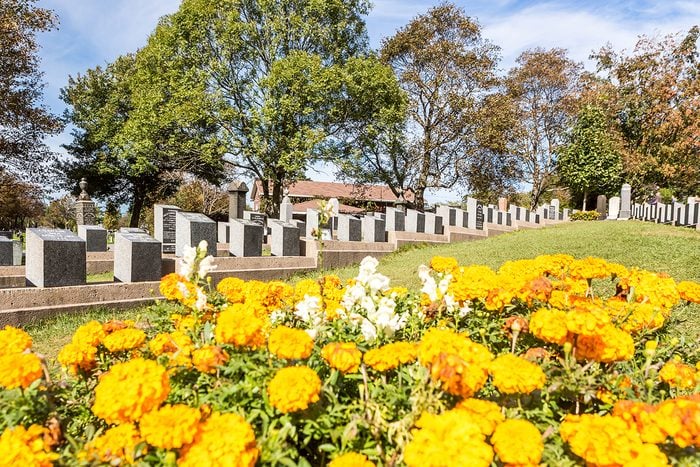
Fairview Lawn Cemetery
Halifax, Nova Scotia
Fairview Lawn Cemetery is beautiful in its simplicity. Graves are laid out in a graceful arc, allowing them to be easily found. Considering the graveyard is an important historical landmark, visited by countless tourists each year, simplicity really works in its favour. The graveyard is the final resting place for 121 victims of the Titanic—most of them memorialized with small granite markers showing just their name and date of death. About one third of the victims recovered were never identified—their graves contain just the date of death and marker number. One of the most notable graves is that of “The Unknown Child,” an infant who wasn’t identified until 2008 through forensic testing. The child turned out to be Sidney Leslie Goodwin, a 19-month-old English boy who died with his entire family in the disaster.
Read up on the most famous shipwrecks in Canadian history.
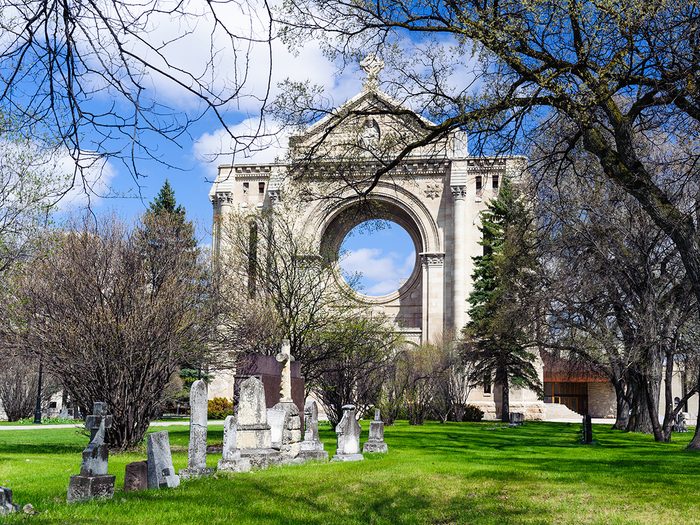
St. Boniface Cathedral Cemetery
Winnipeg, Manitoba
When you visit St. Boniface Cathedral Cemetery, you need to bring your imagination. The oldest graveyard in western Canada was once the home of a historic cathedral, first erected in 1832. The St. Boniface Cathedral underwent a couple redevelopments over the years—in 1862 and again in 1906—until a fire consumed everything but the building’s facade, sacristy and outer walls in 1968. Visitors can now admire the ruins of the former cathedral and the new one built a decade after the fire. The cemetery includes the grave of Louis Riel, a Canadian folk hero and founder of Manitoba.
Next, check out 10 historical landmarks every Canadian should visit.